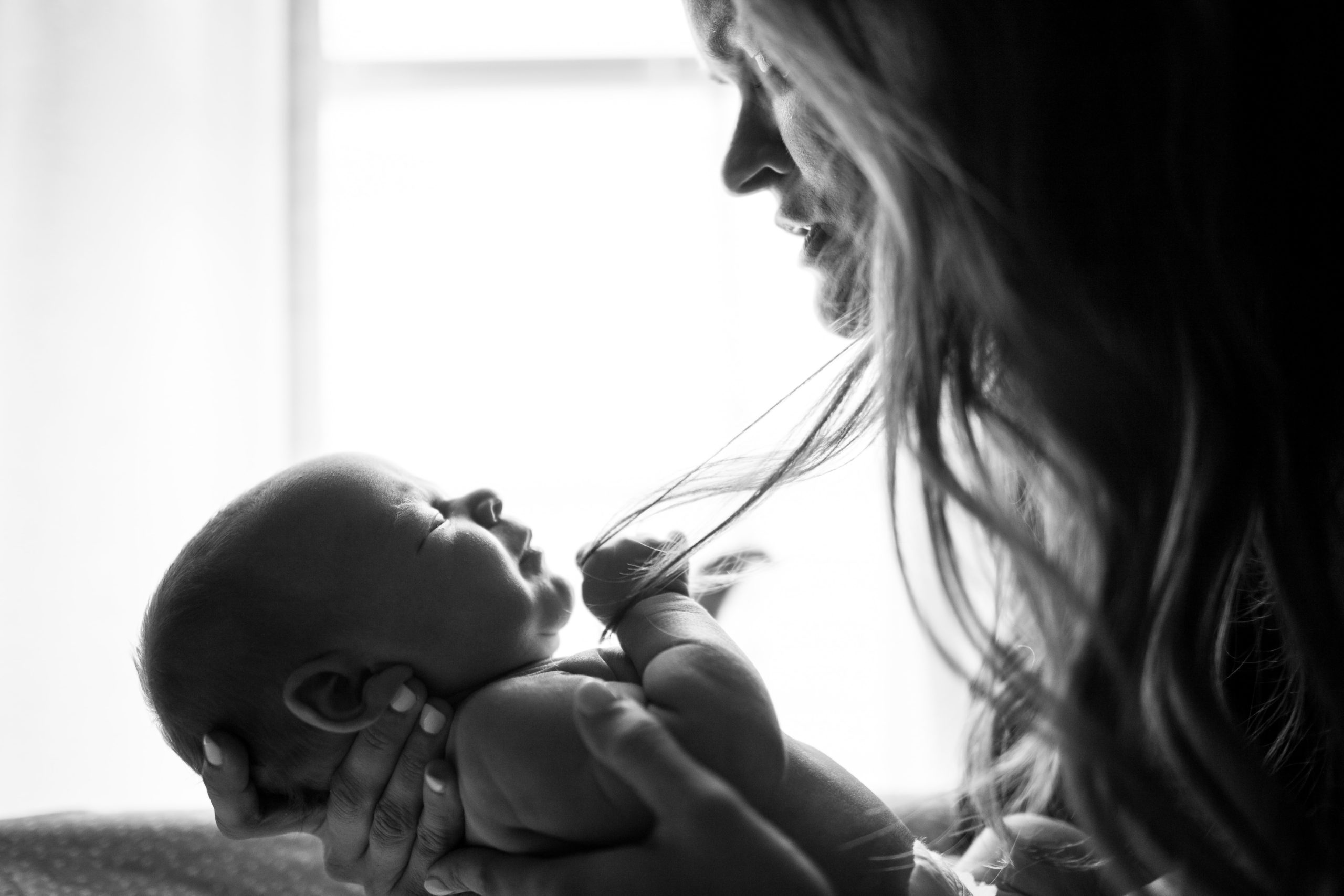September 6th, 2022
5 Reasons You Never Have to Sleep Train
With so much cultural pressure to sleep train, parents can feel backed into a corner. Whether you need some science to back up your gut, or if you’d like to have a few one liners in your back pocket for when you receive well-meaning but unwelcome advice… Here are a few of my favorite reasons not to sleep train.
First, how I define sleep training – following a set of rules or sleep a plan even though it goes against your intuition, or the use separation to encourage your child to sleep.
#5 Self-soothing/self-regulating is a myth
One of my favorite sleep myths to blow to smithereens is, “you have to teach your baby to self-soothe”. Babies and toddlers are not capable of self-soothing.
Instead, when a parent withdraws physical or emotional support, and the child eventually stops crying; this is because the child has given up on their need being met, and their brain builds defenses to preserve their energy. The child has learned not to signal, not self-soothing/self-regulating.
I’m assuming I don’t need to explain that this is not how we want our children to find sleep. When these defenses are built over and over they become the brain’s go-to for stressful situations.
Instead we want them to surrender to the vulnerability of sleep from a place of calm and safety, enabling them to calmly handle stressful situations in the future.
#4 Babies need a present caregiver to regulate
So if babies and toddlers can’t regulate, or more specifically down-regulate on their own, how do they calm down? Our little ones literally borrow our adult brains via mirroring neurons, to compensate for the part of their brain that is underdeveloped. Similar to a yawn being “contagious”, a child can mirror a caregiver’s calm presence to down-regulate their emotions.
It’s by experiencing this co-regulation process 1000s of times, that paves the way for optimal brain and emotional development, and a child who will grow up to be a resilient, independent full functioning human being.
#3 A bridge you don’t want to burn
Humans are emotional beings. All of our thoughts and actions stem from emotion. When we shut the door and ignore our child’s cries, we are conveying that we aren’t available when they are struggling.
A child’s brain is built in the first years of life by the experiences the child has. This means that if your baby or toddler experiences being shut out by their caregivers at an early age, they will continue to hide their emotions from their caregivers as they mature.
This not only makes parenting more difficult in later years, but also stunts emotional development. When a child isn’t able to move through the arch of emotion with the support of a mature caregiver, they become stuck in their development. This is why we all have a favorite immature friend. Just because we continue to grow up, doesn’t mean mature.
#2 Attachment is the preeminent need of humans
There’s a common misconception that attachment is just about proximity. In reality, the dynamic of the relationship is just as important. In order for our children to reach their developmental potential, they must be able to rest in their relationship with their caregiver. This means that the caregiver must remain confidently and lovingly in the lead. In attachment relationships, which is the basis for all mammalian relationships, there is a hierarchy. Someone is always in the lead and someone is always the dependent. When a child is left to cry alone, this signals to them that no one is in the lead, there is nothing more threatening to an immature brain than not having a leader.
#1 Your baby, your choice!
My absolute favorite reason why you never have to sleep train, and the reason you should never ignore – because you don’t want to!! You really don’t need any more reasons than this one. You are the only expert on your child, your baby – your choice!
Sleep training is often a choice parents make when they are desperate and feel they have no other choice. You can make attachment-focused changes to your child’s sleep without sleep training or simply waiting it out. To learn more about my developmental and attachment-focused approach to sleep, read this blog post.

